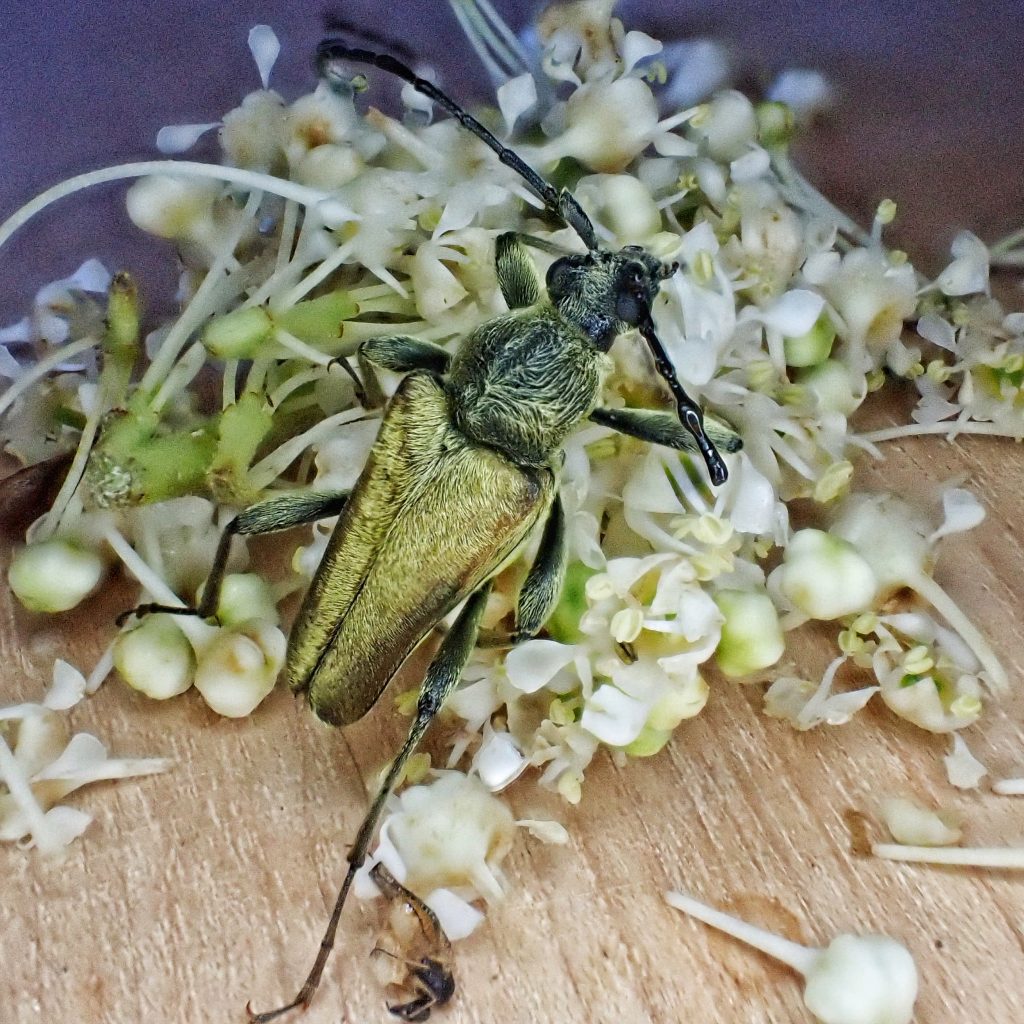
The most exciting find on the afternoon I encountered the Ceanothus velutinus was this spectacular Lepturobosca chrysocoma beetle. I’ve been trying to photograph one of these since I started doing these profiles because they are an amazing looking beetle. And I probably should have at least tried to get in situ photographs as it mowed through the pollen on that Ceanothus, but I was so worried that it would fly away like the last two that I’ve spotted that I just slapped it in a container as soon as I saw it (along with a fair amount of blossom to keep it happy).
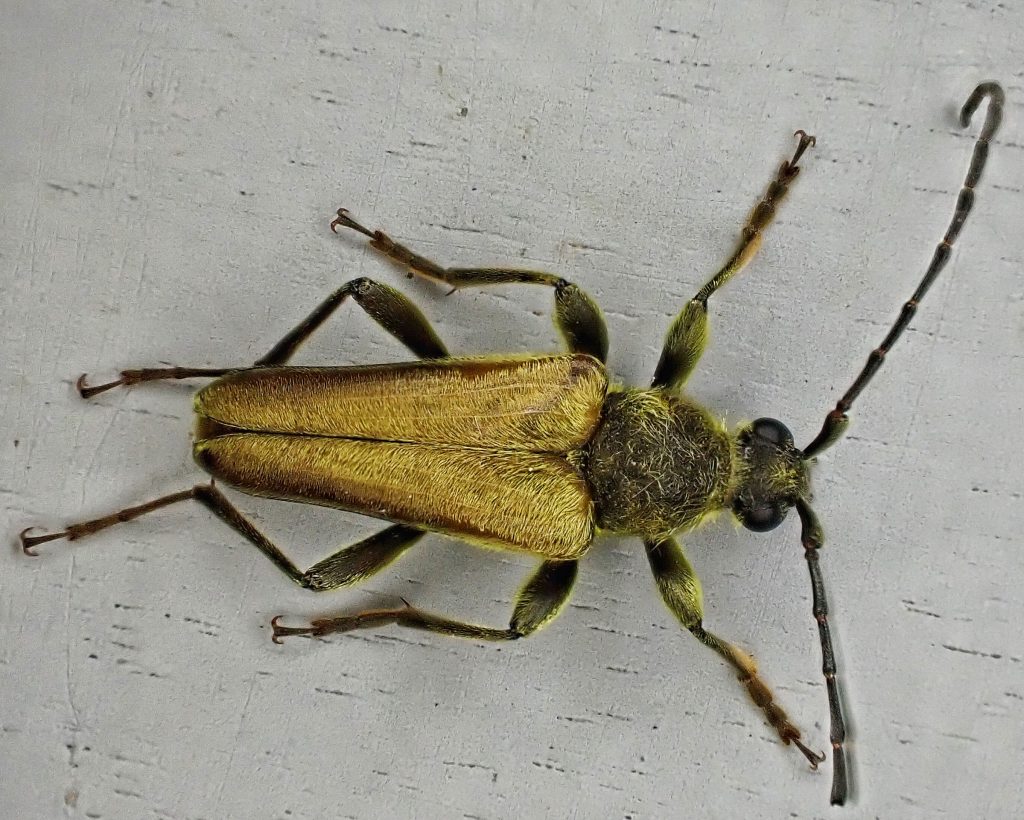
These wonderful longhorn beetles (family Cerambycidae) have a variety of similar common names having to do with their bright coloration, including yellow velvet flower beetle, yellow velvet beetle, golden-haired flower longhorn, and golden flower longhorn beetle. They are often even yellower than their hair, because the yellow setae which cover their whole body also picks up many grains of the pollen on which the adults feed, which makes them a very effective pollinator.
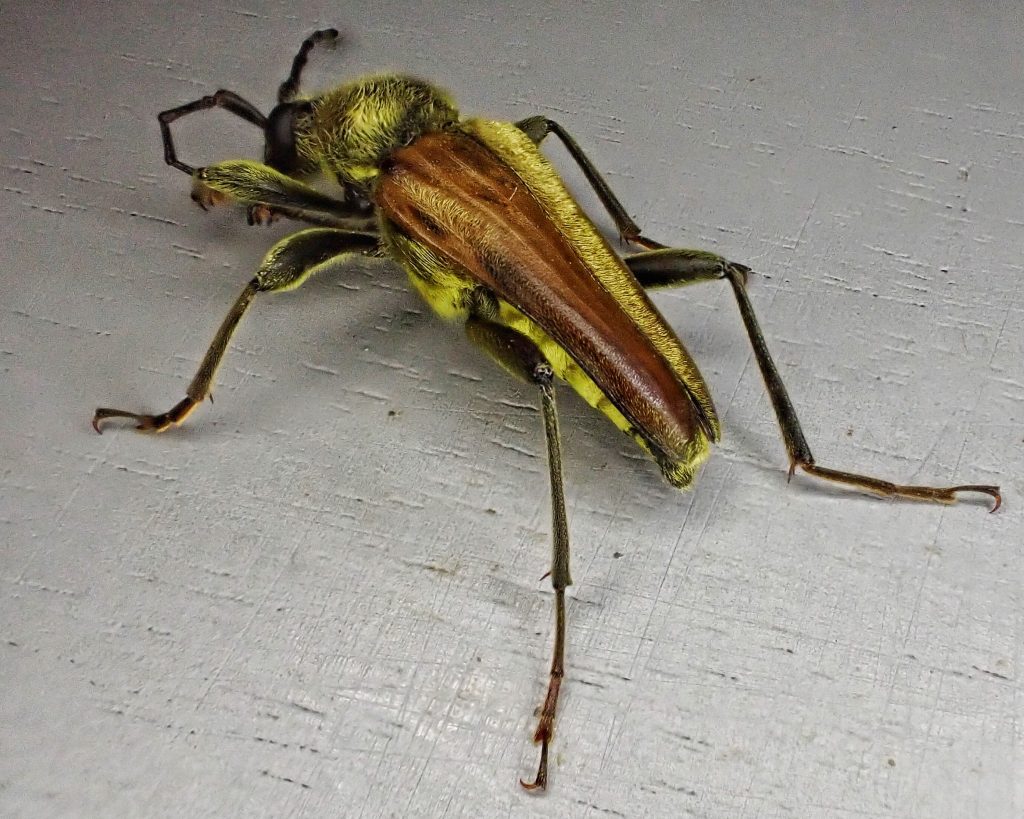
“Entomologists already familiar with the Pacific Northwest beetle fauna may have a hard time adapting to a new genus name for L. chrysocoma, which until recently had been the type species of the genus Cosmosalia. North Americans since Casey (1913) had thought that no species directly related to Cosmosalia existed outside the continent. However, the uncanny resemblance of the North American species to the Palearctic Lepturobosca virens Linnaeus was pointed out by the Russian taxonomist A. Miroshinikov. Miroshnikov (1998) provided illustrations of the male genitalia of all three species as additional evidence for the group’s relatedness, and grouped them into one genus, Lepturobosca, with Cosmosalia as a subgenus. (The original description of LepturoboscaReitter, 1913, was published slightly earlier in the year, and has priority over Cosmosalia Casey, 1913; see Miroshnikov, 1998.)” The Lepturine Longhorn Beetles (Cerambycidae: Lepturinae) of the Pacific Northwest | Oregon State Arthropod Collection
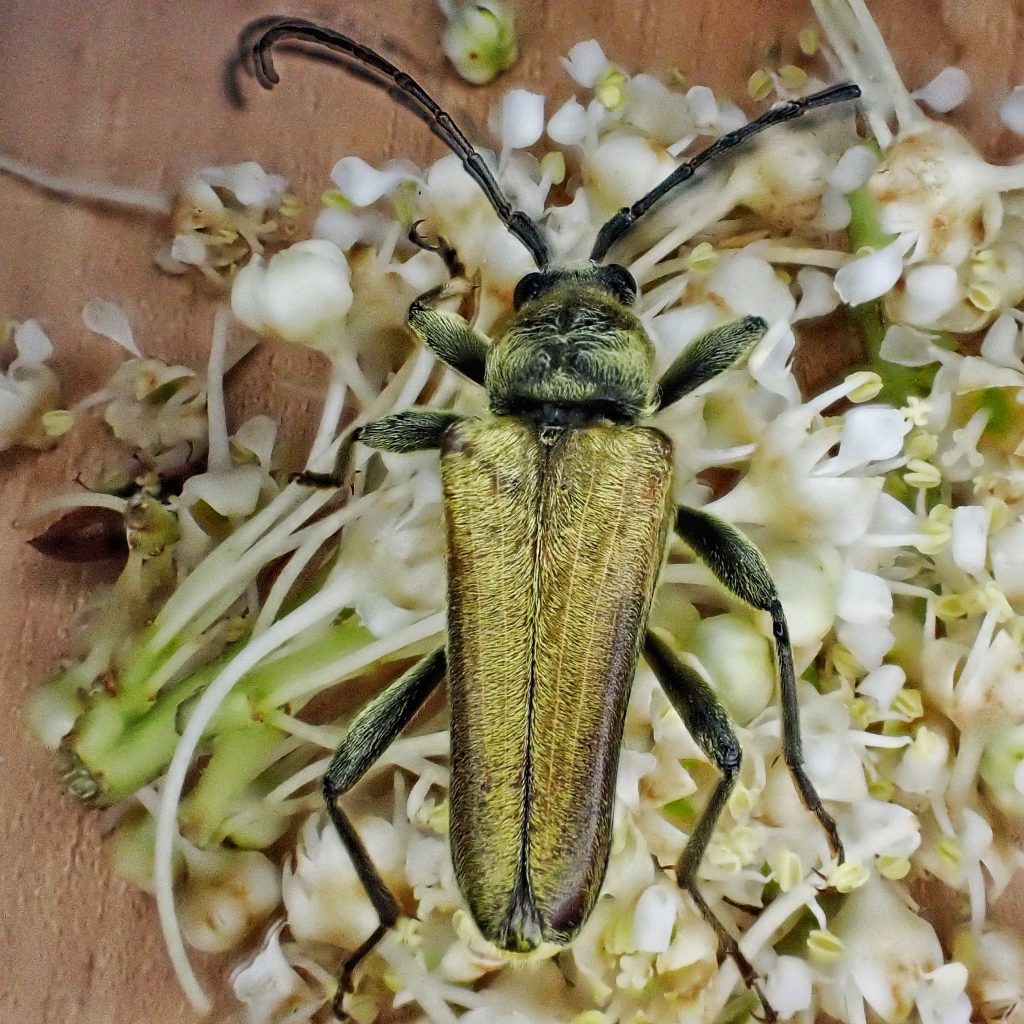
Description– Medium sized (10-20mm long) beetle with antenna about as long as the body, and tapering elytra that are densely covered with appressed, golden setae; pronotum much narrower than shoulders of the elytra, and bell shaped; head narrows behind eyes to form a neck, and head and pronotum also densely covered with golden setae;
Similar species– There is really nothing else in our region that has the tapering elytra along with golden setae covering their entire body.
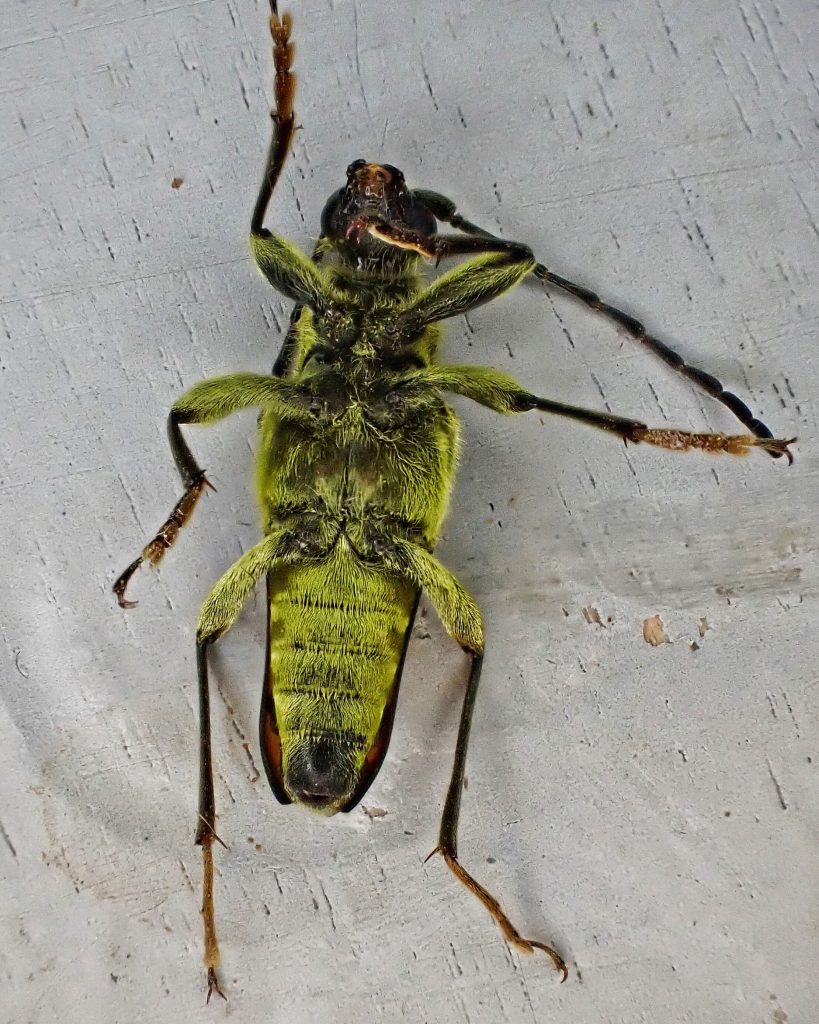
Habitat– Found mostly in or near forests and woodlands, but can be found anywhere their host plants are found. The first ones I ever found were in the Horse Heaven Hills above Benton City, Washington, and the only trees around were a few willows and maybe some cottonwoods in the draws.
Range– “It occurs in North America west of the Great Plains from Alaska to New Mexico, in southern Canada from Nova Scotia to Manitoba, and in the northern United States in Maine, northern Michigan, northern Wisconsin, and eastern Minnesota.” Minnesota Seasons – yellow velvet beetle; found region wide in appropriate habitat in the PNW
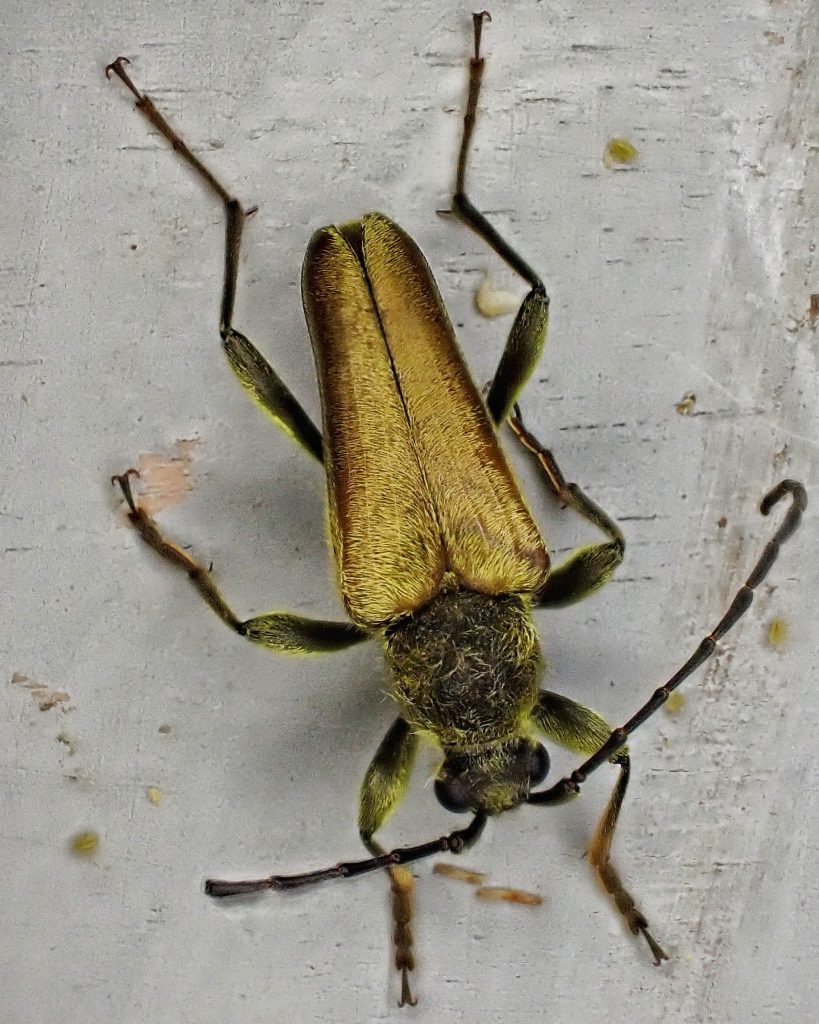
Eats– “The species is a generalist flower-feeder, and most active when flowers are blooming in June and July. Many of the ample museum specimens are caked in pollen…L. chrysocoma uses a wide variety of larval host plants across its broad range in North America, including decaying Achillea, Epilobium, Picea…, and Populus (see Gardiner, 1970…” The Lepturine Longhorn Beetles (Cerambycidae: Lepturinae) of the Pacific Northwest | Oregon State Arthropod Collection; Larvae also known from pines and alders.
Eaten by– “This species is a known host for Coleocentrus quebecensis, a parasitic wasp in the subfamily Acaenitinae.” https://en.wikipedia.org/wiki/Lepturobosca_chrysocoma; presumably preyed upon by insectivores of all classes.
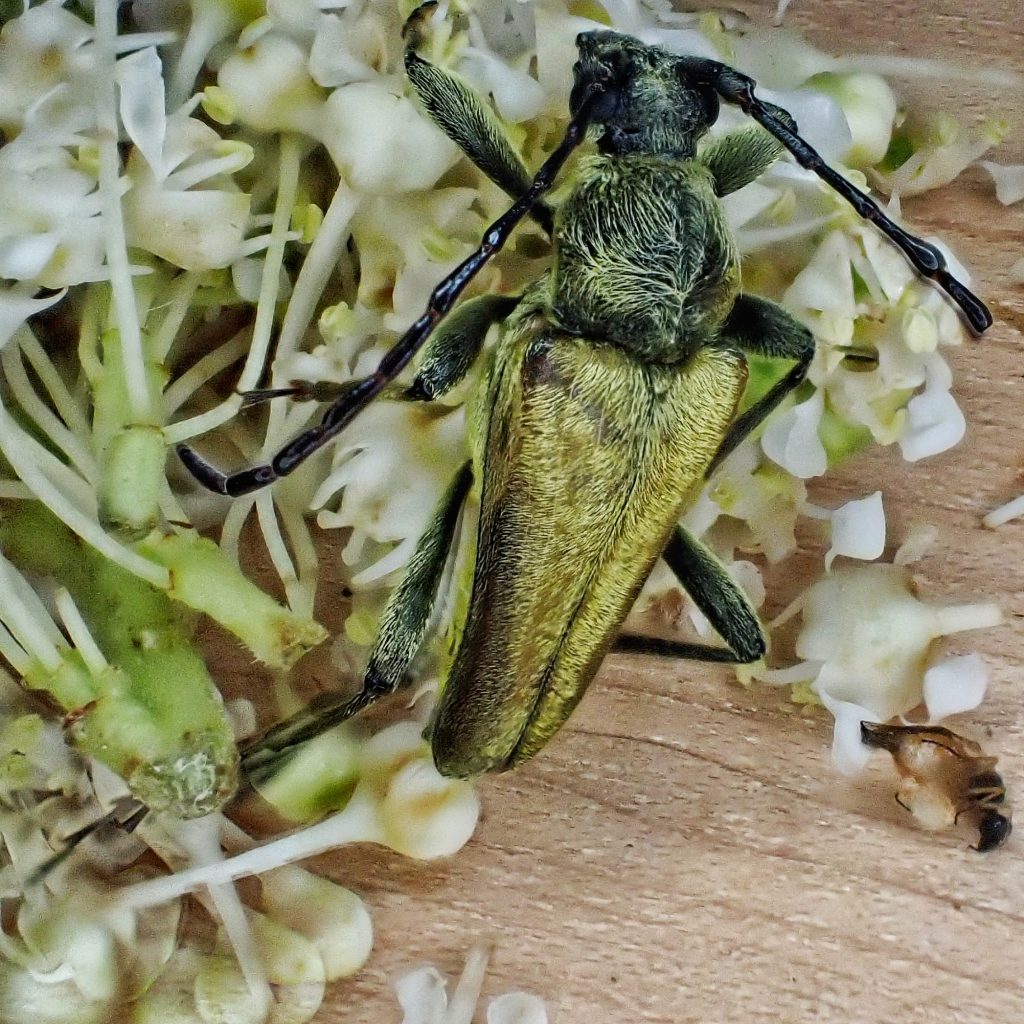
Adults active– June to October
Life cycle– Though I can find nothing specific for this species, eggs are probably laid on the bark of dead or dying trees and shrubs, they probably take 1-3 years to develop into adults, and the adults probably live for 1.5-2 months.
Etymology of names– The origin of Lepturobosca is unclear. Jaeger indicates that Leptur- is from the Greek word for ‘slender/thin/small/weak’, and -bosca may be from the Greek word for ‘feeding’, but I can’t confirm these ideas, or ascertain what they may reference. The specific epithet chrysocoma is much more clear, being from the Greek words for ‘gold hair’, and referring to the abundant yellow setae.
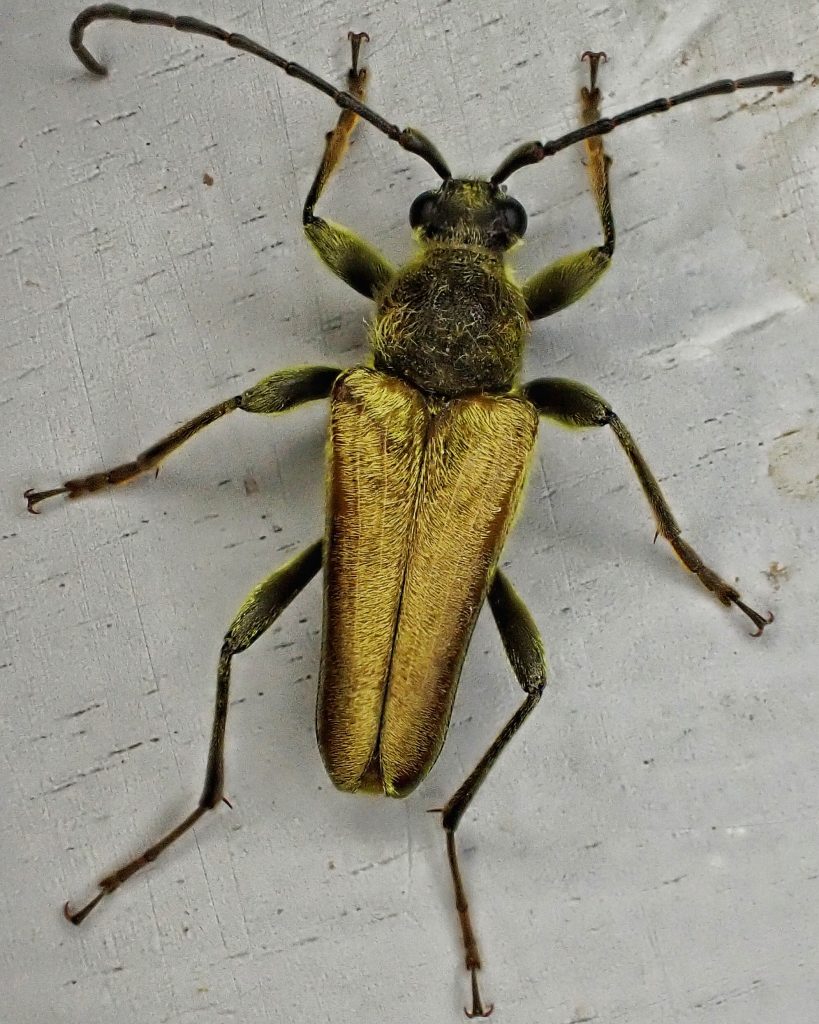
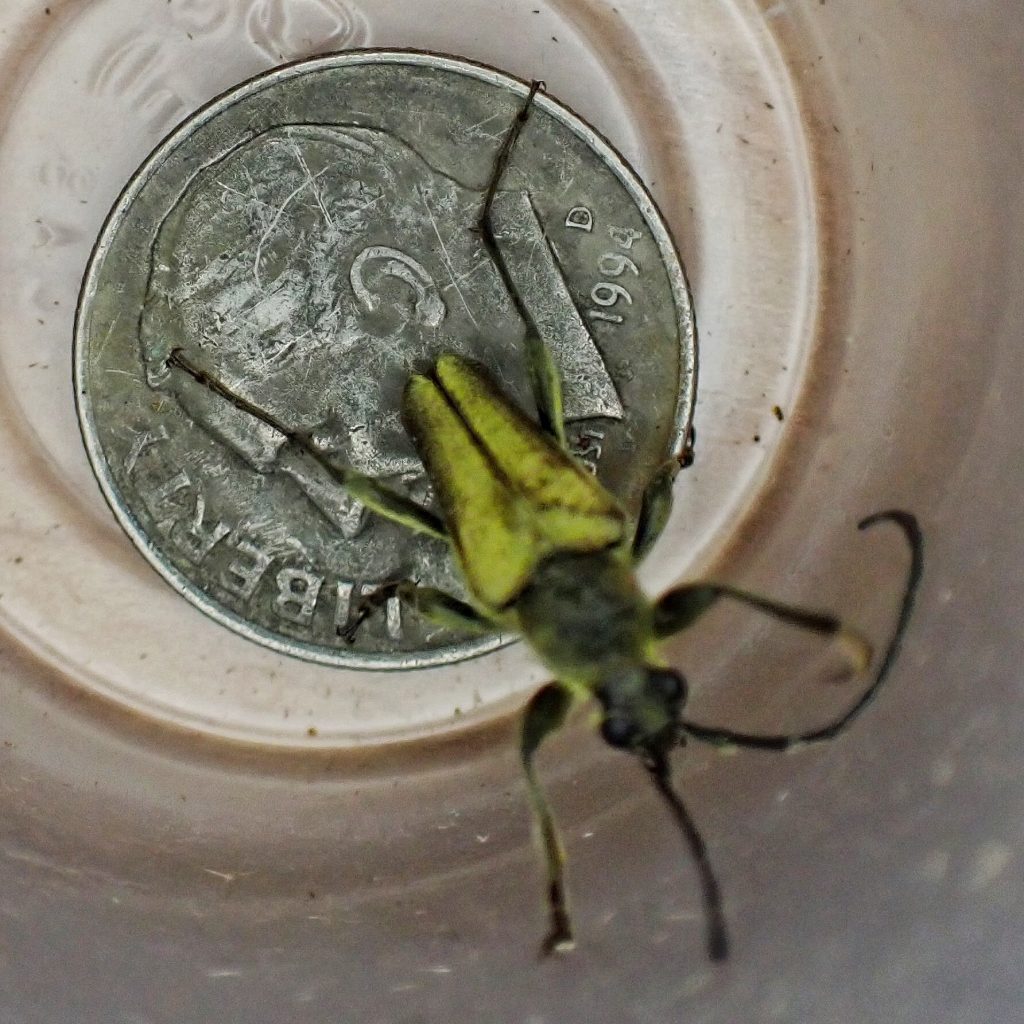
Species Lepturobosca chrysocoma – BugGuide.Net
Minnesota Seasons – yellow velvet beetle
Golden-haired flower longhorn (Lepturobosca chrysocoma) | UWNPS
Yellow Velvet Beetle (Lepturobosca chrysocoma) – Missoula Butterfly House & Insectarium
https://en.wikipedia.org/wiki/Lepturobosca_chrysocoma
https://ir.library.oregonstate.edu/downloads/4b29bb43v
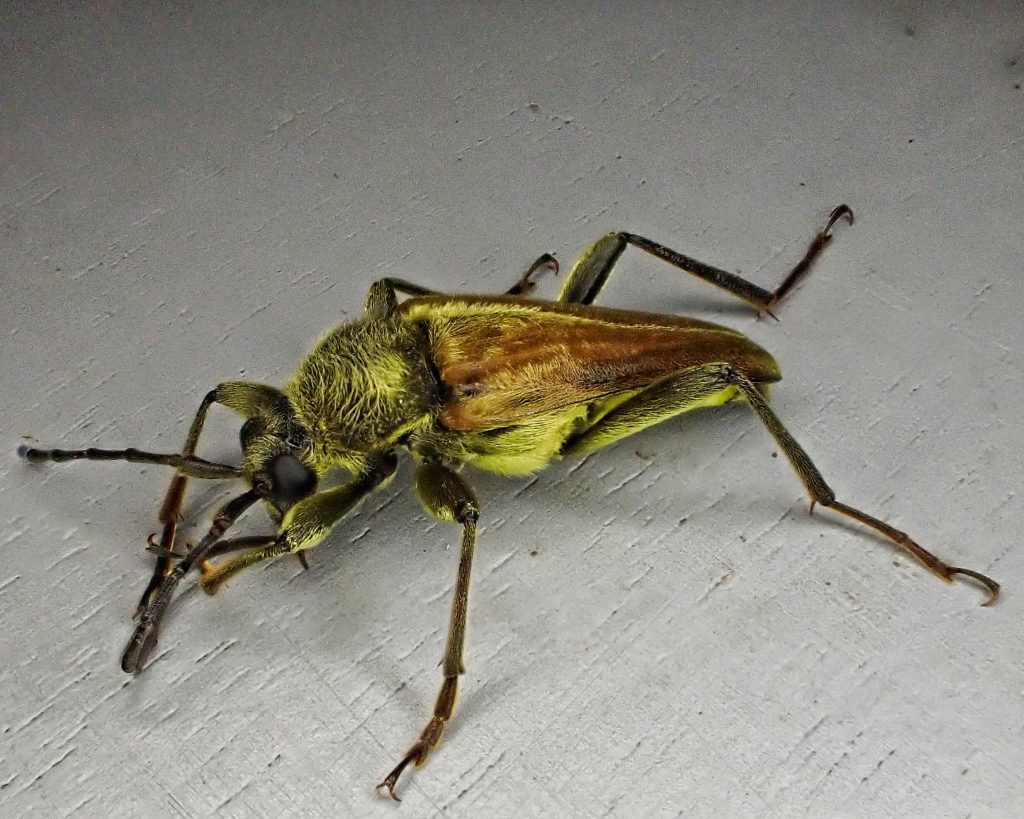
Nice shots, and illumination.
Thanks Brooke, but I could only mess up the beauty of this creature. All photographic credit always goes to my camera!